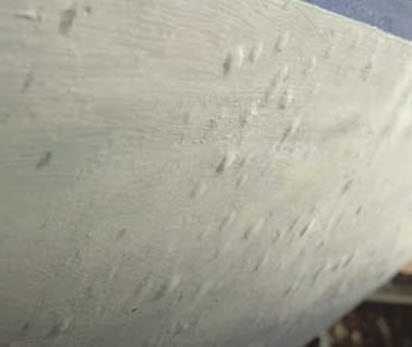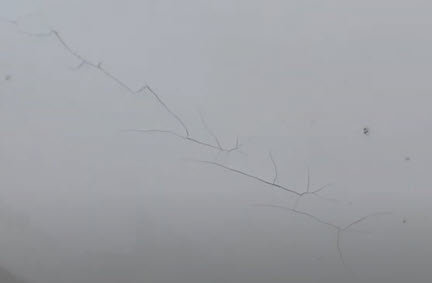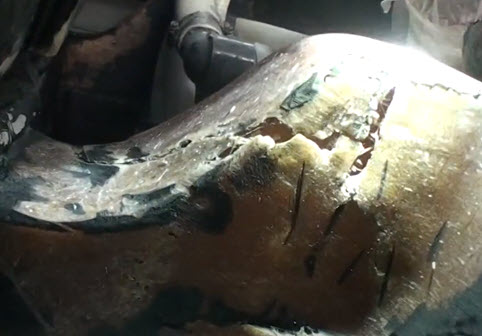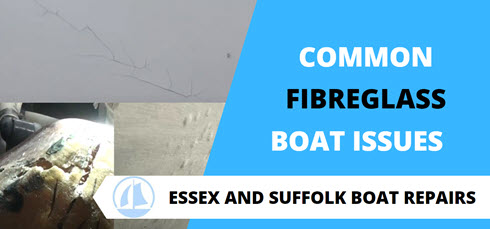In our latest blog post, we embark on a journey through the common fibreglass boat issues that can arise and, more importantly, unveil the secrets to identifying these challenges early on.
Prevention, after all, is the best cure, and understanding the tell tale signs of impending issues can save both time and resources.
Ah, the open sea—the ultimate escape for avid boaters seeking adventure, tranquillity, and the thrill of the waves.
However, beneath the sleek surface of fibreglass vessels lies a world of potential challenges that boat owners must navigate to keep their aquatic companions in top-notch condition.
From subtle gelcoat cracks to the more ominous soft spots in the deck, each potential problem carries its own set of risks.
Join us as we dive deep into the intricacies of these issues, providing insights and practical tips that empower boat owners to be proactive guardians of their marine investments.
Whether you’re a seasoned sailor or a novice navigating the waters for the first time, this comprehensive guide aims to demystify the world of fibreglass boat maintenance.
Together, let’s ensure smooth sailing and extend the life of your beloved vessel. So, buckle up (or rather, life vest on!), as we set sail into the realm of common fibreglass boat issues and the savvy solutions to keep your maritime adventures afloat.
Table of Contents
Gelcoat Cracks:
- Discussion: Gelcoat cracks are often the result of stress, impacts, or aging. While they may start as small hairline cracks, they can worsen over time, allowing water to penetrate the underlying fibreglass layers.
- Identification Tips: Regularly inspect the gelcoat surface for any signs of small cracks. Pay attention to stress points and areas that are frequently exposed to impacts. Use a flashlight to check for cracks in less visible areas.
- Prevention Tips: Apply wax or protective coatings to the gelcoat surface regularly to reduce the impact of UV rays and environmental factors. Promptly repair small cracks using gelcoat filler to prevent water infiltration.
Blisters:

- Discussion: Blisters are small bumps or pockets filled with liquid that form on the hull due to moisture infiltration. If left untreated, they can compromise the integrity of the fibreglass layers.
- Identification Tips: Inspect the hull for any abnormalities, especially after the boat has been out of the water for a while. Blisters may be more apparent when the hull is dry. Run your hand over the surface to feel for any raised areas.
- Prevention Tips: Keep the boat well-maintained and promptly address any signs of osmotic blistering. Use barrier coatings during boat construction to reduce the risk of water penetration.
Soft Spots in the Deck:
- Discussion: Soft spots in the deck indicate delamination, where the fibreglass layers separate. This can be caused by water intrusion, and if not addressed, it can compromise the structural integrity of the deck.
- Identification Tips: Walk around the deck regularly, paying attention to any areas that feel soft or spongy underfoot. Tap the deck with a mallet and listen for hollow sounds, which may indicate delamination.
- Prevention Tips: Promptly address any leaks or sources of water entry. Ensure proper drainage to prevent water from pooling on the deck. Regularly inspect and reseal deck fittings to prevent water infiltration.
Transom Rot:
- Discussion: Transom rot is a common issue, especially in older boats, where water penetrates the transom core, leading to wood rot. This can compromise the strength of the transom and affect motor mounting.
- Identification Tips: Check for soft or spongy areas around the outboard motor mounting. Inspect the transom for signs of water leakage, such as discoloration or dampness.
- Prevention Tips: Ensure proper sealing of all transom fittings. If the boat is stored in the water, use a transom saver to reduce stress on the transom. Regularly inspect and replace any damaged transom core material.
Stress Cracks:

- Discussion: Stress cracks can develop due to structural stresses, impacts, or flexing of the boat. They may start as fine spider-like cracks but can propagate if not addressed.
- Identification Tips: Inspect the hull, especially in areas that experience high stress or are prone to impacts. Look for any visible cracks or listen for creaking sounds while underway.
- Prevention Tips: Reinforce high-stress areas during boat construction. Avoid overloading the boat beyond its recommended capacity. Promptly repair any visible stress cracks to prevent further propagation.
Hull Delamination:
- Discussion: Hull delamination occurs when the fibreglass layers separate, leading to a hollow or drum-like sound when tapped. This issue can compromise the structural integrity of the boat.
- Identification Tips: Tap the hull in various areas and listen for differences in sound. Inspect the hull for visible signs of separation, such as bubbles or waves.
- Prevention Tips: Ensure proper lamination during boat construction. Address any sources of water infiltration promptly to prevent delamination. Regularly inspect the hull for signs of separation.
Corrosion around Metal Fittings:
- Discussion: Corrosion around metal fittings is often the result of electrolysis or galvanic corrosion, which occurs when dissimilar metals interact, leading to rust stains and weakening of the fittings.
- Identification Tips: Regularly inspect metal fittings for signs of rust or corrosion. Check for discoloration around the fittings and ensure a proper electrical bonding system on the boat.
- Prevention Tips: Use non-corrosive materials for fittings when possible. Apply dielectric grease to metal fittings to prevent electrolysis. Implement proper electrical grounding to reduce the risk of galvanic corrosion.
Cracks in the Stringers:

- Discussion: Cracks in the stringers can occur due to stress, impact, or water damage, compromising the structural support of the boat.
- Identification Tips: Inspect the stringers for visible cracks or signs of stress. Check for any soft spots or changes in texture along the length of the stringers.
- Prevention Tips: Reinforce or replace damaged stringers during boat construction. Avoid overloading the boat beyond its recommended capacity. Regularly inspect and maintain the stringers to ensure structural integrity.
Regular and thorough inspections, coupled with proactive maintenance, are key to identifying these issues early on and preventing further damage to fibreglass boats.
Boat owners should also consider consulting with professionals for a comprehensive inspection, especially if they suspect more significant problems.
Conclusion
In conclusion, maintaining the structural integrity and aesthetic appeal of fibreglass boats requires vigilant inspection and proactive care.
Addressing common issues such as gelcoat cracks, blisters, soft spots in the deck, transom rot, stress cracks, hull delamination, corrosion around metal fittings, and cracks in the stringers early on is crucial for preventing further damage and ensuring the longevity of the vessel.
Regular inspections, both visual and tactile, play a vital role in identifying these issues before they escalate. Boat owners should develop a routine inspection checklist, paying close attention to high-stress areas, frequently impacted regions, and places prone to water exposure.
The use of appropriate protective coatings, timely repairs, and adherence to proper maintenance practices contribute significantly to the prevention of fibreglass boat issues.
Additionally, a proactive approach to prevention involves understanding the root causes of these problems. Whether it’s UV exposure, water infiltration, structural stress, or electrolytic corrosion, boat owners can take steps to minimize these factors and mitigate potential damage.
When uncertainties arise or if more extensive issues are suspected, seeking professional advice and inspections can be invaluable in ensuring a comprehensive assessment and effective solutions.
By implementing these preventive measures and promptly addressing any identified concerns, boat owners can enjoy a safer, more reliable, and longer-lasting fibreglass boat.
A well-maintained vessel not only enhances the boating experience but also preserves the value of the investment over time.
Ultimately, the combination of routine maintenance, informed decision-making, and timely repairs contributes to a seaworthy and resilient fibreglass boat that stands up to the challenges of the marine environment.
I love it when boat owners can do their own maintenance, but sometimes you might need a bit of professional advice and that’s where you can call on me. I’ll help you in any way I can.
All you need to do is contact me here and I’ll get back to you with some advice for your particular problem, if I can’t help I’ll be straight and tell you, but in all my years of boat building and boat repairs there isn’t much in terms of common fibreglass boat issues that I haven’t come across.
